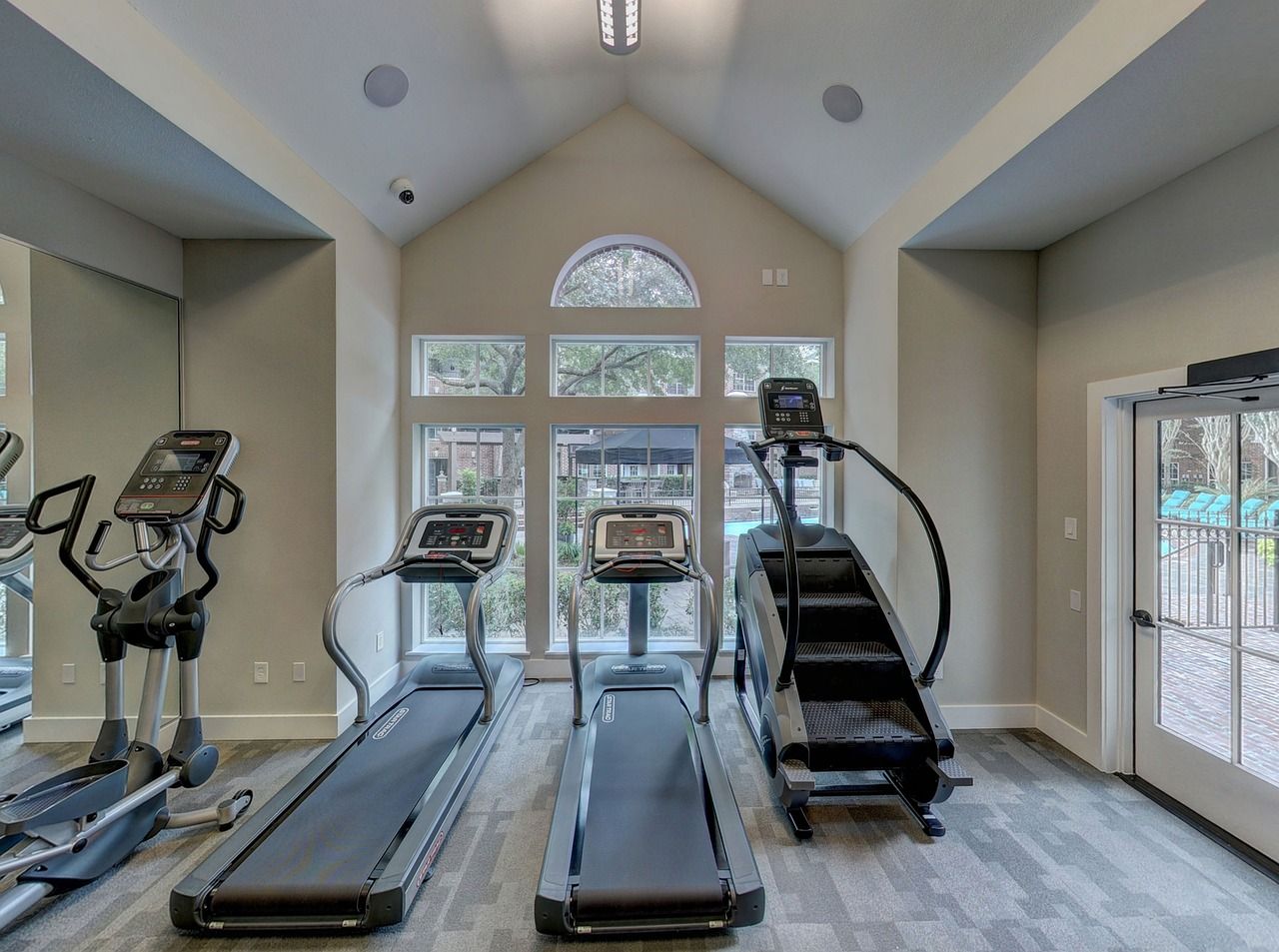Table of Contents
- Introduction: The Benefits and Process of a Home Gym Transformation
- Key Takeaways: Summary of Important Points
- Determining the Ideal Size for Your Home Gym
- Selecting the Optimal Location for Your Home Gym
- Identifying Your Personal Needs and Preferences in a Home Gym
- Choosing the Right Exercise Equipment for Your Home Gym
- Designing a Fun, Functional, and Safe Home Gym
- Inspiration for Motivational Features in Your Home Gym
- Useful and Affordable DIY Home Gym Ideas
- The Pros and Cons of a Backyard Gym
- Conclusion: Recap and Final Thoughts
Key Takeaways
- Transforming a spare room into a home gym offers a convenient and cost-effective way to maintain your fitness regimen.
- The size of your home gym depends on the available space and your workout needs. Even small rooms can be effectively utilized with the right equipment.
- Location matters when setting up a home gym. Consider factors like natural light, ventilation, and noise levels.
- Identify your workout preferences and needs before setting up your home gym. This will guide you in choosing the right equipment and design.
- Carefully select your exercise equipment based on your fitness goals, budget, and available space.
- A fun, functional, and safe home gym design can greatly enhance your workout experience. Consider aspects such as safety, ease of movement, and aesthetic appeal.
- Motivational features, such as inspirational quotes and progress trackers, can boost your workout motivation.
- There are numerous DIY ideas for setting up a home gym on a budget. Repurposing items and buying second-hand equipment are viable options.
- A backyard gym can be a great alternative if indoor space is limited, although weather considerations and privacy can be potential challenges.
- A well-planned home gym can be a valuable addition to your home, providing easy access to fitness and promoting a healthy lifestyle.
Introduction
Welcome to our comprehensive guide on transforming your spare room into a personal fitness gym! As our lives grow increasingly busy, finding time to hit the gym can be a challenge. The solution? Bringing the gym into your home. The importance of having a home gym extends beyond convenience; it offers a personal space for focused workouts, eliminates travel time, and allows flexibility to exercise at any time of the day.
In this guide, we'll explore the benefits of a home gym and the steps to create one. We'll discuss how to evaluate the size and location of your gym, identify your workout preferences, choose the right exercise equipment, and design a safe, functional, and enjoyable workout space. We'll also delve into budget-friendly DIY ideas, motivational features, and even the possibility of setting up a gym in your backyard.
Whether you're a fitness enthusiast or someone looking to kick-start a healthier lifestyle, this guide is designed to help you navigate the process of creating a home gym that suits your needs and space. Are you ready to get started on your home fitness journey? Let's dive in!
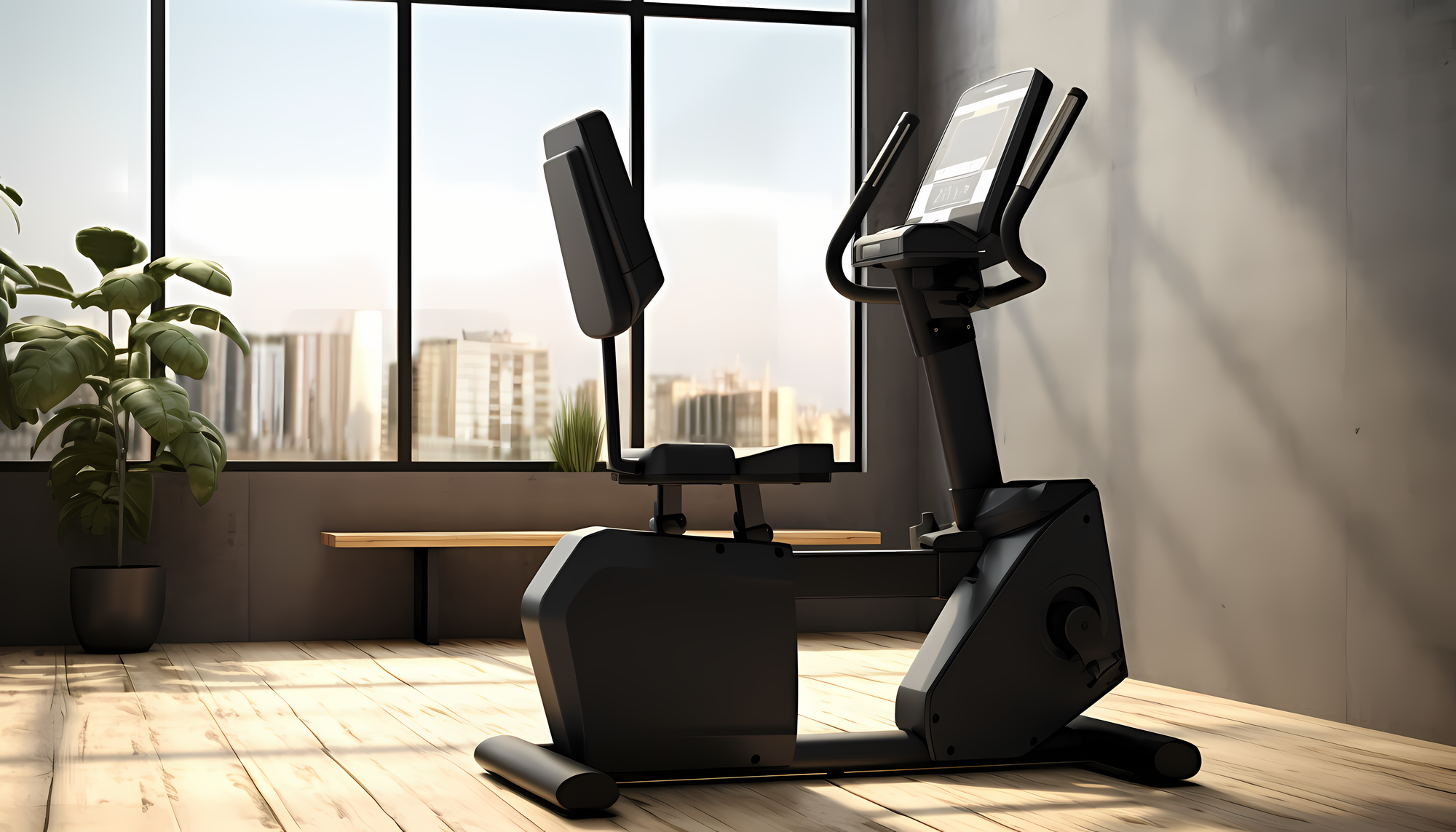
What is a good Size for a Home Gym?
Are you wondering about the ideal size for a home gym? The good news is, the perfect home gym size depends entirely on your personal needs, the type of workouts you plan to do, and the available space in your home.
- Small Spaces: Even a small room, such as a spare bedroom or a part of the garage about 8x10 feet, can make a functional home gym. It can comfortably accommodate essential workout equipment like dumbbells, resistance bands, a yoga mat, or a stability ball. For instance, consider a New York City resident who turned her small studio apartment's corner into a workout zone, using vertical storage solutions for weights and foldable equipment to maximize space.
- Medium Spaces: A mid-sized room, around 10x10 to 12x12 feet, can host more robust equipment like a treadmill, elliptical, or a multipurpose weight machine. An inspiring example is a Seattle-based fitness enthusiast who converted his home office into a gym, fitting in a stationary bike, free weights, and a bench in the room.
- Large Spaces: If you have a larger space available, approximately 20x20 feet or more, you can create a comprehensive home gym with multiple workout stations. Consider a family in Texas who transformed their unused basement into a state-of-the-art home gym, complete with a squat rack, bench press, cardio machines, and a dedicated area for yoga and pilates.
The advantages of having different room sizes are various. A smaller room can be a cozy, focused space for workouts, easy to heat or cool and less expensive to equip. A larger room, on the other hand, provides the flexibility to include a range of equipment, set up different workout zones, and even accommodate multiple users at once.
In conclusion, when determining the size of your home gym, consider your fitness goals, the type of workouts you enjoy, and the available space. Remember, consistency is key in fitness, and a well-planned home gym, irrespective of size, can help maintain that consistency.
Where To Put Your Home Gym
Choosing the location of your home gym is a crucial step in your fitness journey. A variety of factors come into play when deciding the perfect spot for your exercise sanctuary. Here are some key considerations and the benefits and drawbacks of different locations.
- Available Space: The first and most fundamental factor is the availability of space. A spare bedroom, basement, garage, or even a sunroom could be viable options. Each room size offers different benefits, with larger rooms allowing for more equipment, and smaller rooms providing a cozy, focused workout area.
- Natural Light and Ventilation: Spaces with plenty of natural light and good ventilation are ideal as they create an uplifting and healthy workout environment. Basements or interior rooms might lack these features, but can be enhanced with artificial lighting and fans.
- Noise Levels: Consider the noise your workouts might produce. Equipment like treadmills can generate substantial noise, which could be disruptive if your gym is near bedrooms or study areas. A detached garage or a basement can be a good location to minimize noise disturbance.
- Privacy: Your comfort level during workouts is crucial. Some people prefer a private spot away from common areas, while others might enjoy a room with a view.
- Access to Amenities: Easy access to a bathroom or a kitchen for post-workout hydration and meals can be a plus.
- Flooring: Sturdy flooring is essential to support heavy equipment and intense workouts. Basements and garages usually have concrete floors that are well-suited for this purpose, compared to carpeted bedrooms or tiled living rooms.
Remember, the ultimate goal is to choose a location that motivates you to stay consistent with your workouts. Whether it's the spare room with a beautiful view or the secluded and spacious basement, the best location for your home gym is the one that inspires you to keep moving!
Space Optimization Tips for Small Home Gyms
Maximizing small spaces for a home gym setup requires creativity and strategic planning. Here are actionable tips to create an efficient workout area in limited space:
- Foldable Equipment: Invest in foldable workout equipment like treadmills, exercise bikes, and weight benches. These can be easily stored away when not in use, freeing up valuable floor space.
Real-life Example: Mark, living in a studio apartment, uses a foldable exercise bike that he stores in his closet during the day, transforming his living area into a gym space in minutes.
- Wall-Mounted Racks and Hooks: Utilize vertical space by installing wall-mounted racks for hanging weights, resistance bands, and yoga mats. Hooks can also hold jump ropes and headphones, keeping them organized and accessible.
Real-life Example: Sarah transformed one wall of her small spare room into a storage hub with mounted racks and hooks, keeping her gym equipment off the floor and creating more workout space.
- Vertical Storage Solutions: Tall, narrow shelving units or storage towers can hold smaller items like dumbbells, kettlebells, and workout towels without taking up much floor space.
Real-life Example: Alex, a fitness enthusiast, uses a multi-tiered storage tower to organize his weights and workout accessories, making his small garage gym clutter-free and functional.
- Multipurpose Furniture: Consider furniture that doubles as workout equipment, such as a sturdy ottoman for step-ups or a coffee table that can support bodyweight exercises.
Real-life Example: Emily incorporates her living room furniture into her workouts, using a strong coffee table for incline push-ups and a chair for tricep dips.
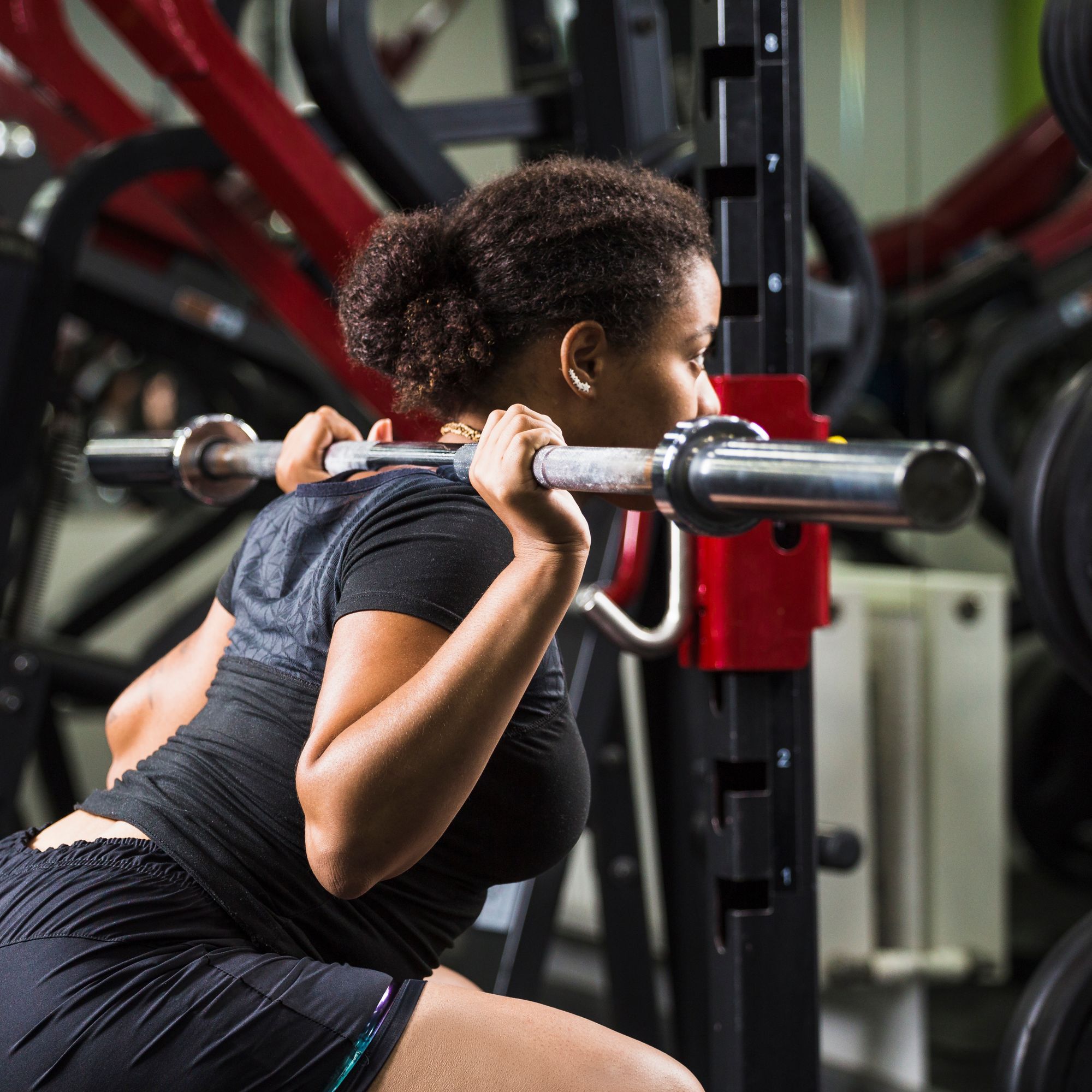
Safety Guidelines for Setting Up a Home Gym
Ensuring your home gym is a safe space to exercise is paramount. Follow these safety guidelines to minimize risks:
- Proper Equipment Spacing: Leave ample space around each piece of equipment to safely perform exercises without risk of injury. A good rule of thumb is to allow at least 2-3 feet of clearance.
Safety Tip: Before finalizing your gym layout, use tape to mark where each piece of equipment will go, ensuring there's enough space for movement.
- Secure Installation of Heavy Equipment: Make sure heavy equipment, like squat racks and pull-up bars, are securely anchored to the floor or wall to prevent tipping or movement during use.
Safety Tip: For equipment that requires anchoring, consider hiring a professional to ensure it's installed correctly and safely.
- Non-Slip Flooring: Install rubber mats or interlocking foam tiles to provide a stable and non-slip surface, reducing the risk of falls and cushioning any impacts.
Safety Tip: Cover the entire workout area with appropriate flooring, and regularly check for any wear and tear that could pose a tripping hazard.
- Regular Equipment Inspection: Periodically inspect your equipment for any signs of damage, such as frayed cables, loose bolts, or cracked weights, and repair or replace as necessary.
Safety Tip: Create a maintenance schedule to inspect your equipment every few months, ensuring everything remains in good working condition.
- Emergency Plan: Keep a first aid kit readily available and familiarize yourself with basic first aid practices. Knowing what to do in case of an injury can prevent further harm.
Safety Tip: Take a basic first aid course online or through a local community center to prepare for any potential gym-related injuries.
By incorporating these space optimization tips and safety guidelines, you can create a small home gym that is both functional and safe, ensuring your workouts are effective and enjoyable without compromising on space or safety.
What’s Important to You in a Home Gym
Creating the perfect home gym is a highly personal journey as it should be tailored to your fitness goals, lifestyle, and preferences. Here are some key considerations to keep in mind:
- Workout Preferences: Your workout style largely influences your home gym setup. If you're into weightlifting, you'll need space for a bench press, squat rack, and free weights. Yoga enthusiasts might prefer a serene corner with a mat, blocks, and straps. For cardio lovers, a treadmill or stationary bike could be essential.
Example: A yoga practitioner might prefer a quiet, sunlit room with minimal equipment, while a CrossFit enthusiast would need a larger space fitted with a variety of strength and cardio equipment. - Space Availability: The space available in your home determines how much equipment you can accommodate. If space is at a premium, opting for multi-functional equipment or items that can be easily stored away can help.
Example: A city dweller might choose a foldable treadmill and adjustable dumbbells for their small apartment, while a suburban homeowner might dedicate an entire basement to their home gym. - Budget: Your budget plays a significant role in your home gym setup. While some might splurge on high-end equipment and smart workout machines, others might opt for budget-friendly alternatives.
Example: A fitness enthusiast might invest in a Peloton bike and a full set of dumbbells, while someone on a budget might opt for resistance bands, a jump rope, and second-hand weights. - Aesthetic and Ambience: The vibe of your home gym should inspire you to work out. Some might like a minimalist design, while others might prefer vibrant colors and motivational posters.
Example: A minimalist might choose sleek, modern equipment and neutral colors, while someone else might prefer a vibrant space filled with bold colors and inspirational quotes.
Ultimately, the best home gym is one that reflects your personal style, meets your fitness needs, and motivates you to maintain a consistent workout routine. So, take the time to think about what's truly important to you in a home gym before you start setting it up.
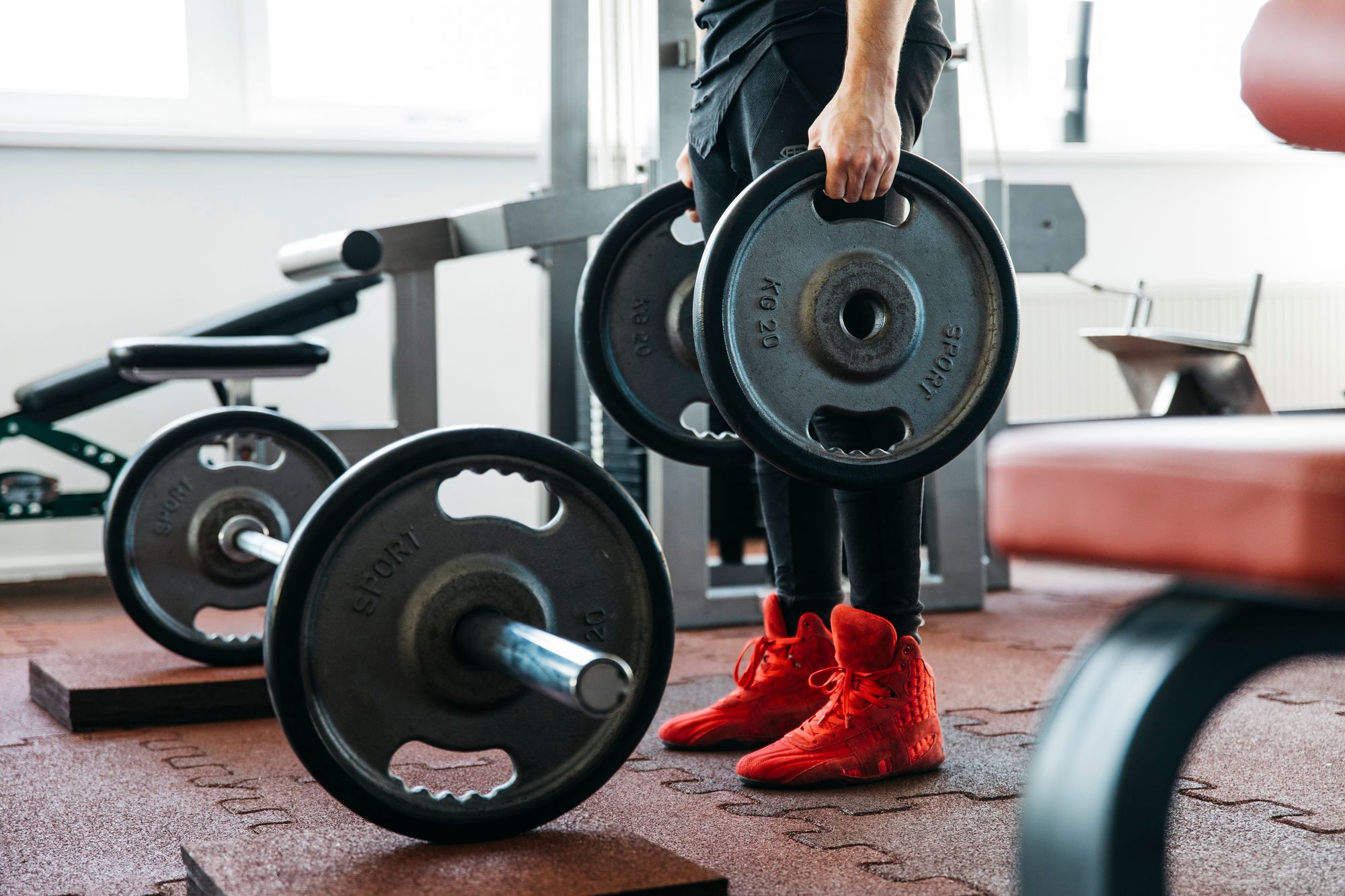
Choosing the Right Exercise Equipment for Your Home Gym
Creating your home gym is an exciting journey, and choosing the right exercise equipment is a crucial component of this process. Here's a breakdown of different types of exercise equipment, factors to consider when choosing them, and their approximate price ranges.
- Cardio Equipment: Cardio machines help improve heart health and burn calories. Common options include treadmills, stationary bikes, ellipticals, and rowing machines. When choosing, consider the type of cardio you enjoy, the machine's footprint, and your budget.
- Treadmills: $300 - $3000 - Stationary Bikes: $200 - $2500 - Ellipticals: $300 - $3000 - Rowing Machines: $200 - $1500 - Strength Equipment: Strength training equipment helps build muscle and bone density. Options range from free weights like dumbbells and kettlebells to more complex machines like multi-gyms or cable machines. Consider your strength training goals, available space, and budget.
- Dumbbells: $10 - $50 per piece - Kettlebells: $20 - $100 per piece - Multi-gyms: $800 - $5000 - Cable Machines: $1000 - $4000 - Flexibility and Balance Equipment: Items like yoga mats, stability balls, foam rollers, and balance boards can help improve flexibility, balance, and core strength. Your choice should align with your workout preferences and goals.
- Yoga Mats: $10 - $100 - Stability Balls: $10 - $50 - Foam Rollers: $10 - $50 - Balance Boards: $20 - $150
When choosing equipment, consider these factors:
- Fitness Goals: Choose equipment that aligns with your fitness goals. If you aim to lose weight, invest in a good cardio machine. For muscle building, strength equipment would be ideal.
- Space: Ensure the equipment fits comfortably in your available space. Measure your room before purchasing large items.
- Budget: Fitness equipment varies greatly in cost. Determine your budget beforehand and invest wisely in machines that offer the most value for your workouts.
- Quality and Durability: Prioritize quality and durability over price. It's better to invest in a high-quality piece that will last than to replace cheaper equipment regularly.
Creating a home gym is not about stuffing the room with high-end equipment but selecting the right tools that will help you achieve your fitness goals. With careful consideration and smart choices, you can create a home gym that's effective, motivating, and uniquely yours.
Maintenance and Care Tips for Home Gym Equipment
Maintaining and caring for your home gym equipment not only prolongs its lifespan but also ensures safety during workouts. Here are comprehensive tips for keeping your gym in top condition:
- Daily Cleaning Routines: Wipe down equipment after each use to remove sweat and germs. Use a gentle cleaner on surfaces to avoid damage, especially on screens and electronic panels.
Tip: Keep a set of microfiber cloths and a spray bottle with a mix of water and mild detergent handy in your gym area for easy cleanup.
- Weekly Inspections for Wear and Tear: Regularly check equipment for signs of wear, such as frayed cables, loose parts, or cracked weights. Addressing these issues early can prevent accidents and costly repairs.
Tip: Create a checklist of all equipment to methodically inspect each piece weekly, ensuring nothing is overlooked.
- Manufacturer-Specific Maintenance: Follow the manufacturer’s guidelines for specific maintenance requirements. Some equipment may need lubrication, tightening of bolts, or other specific care.
Tip: Keep all equipment manuals in a binder or digital folder for easy reference. Set calendar reminders for maintenance tasks that need to be performed periodically.
- Protective Measures for Flooring: Use protective mats under heavy equipment to prevent floor damage and reduce noise. Inspect mats regularly for tears or slips.
Tip: Choose high-density rubber mats that can withstand the weight and movement of equipment, offering both floor protection and stability.
- Climate Control: Maintain a controlled environment to prevent damage from humidity or extreme temperatures, which can affect metal components and electronic systems.
Tip: Use a dehumidifier in damp areas and avoid placing equipment in direct sunlight or unheated spaces.
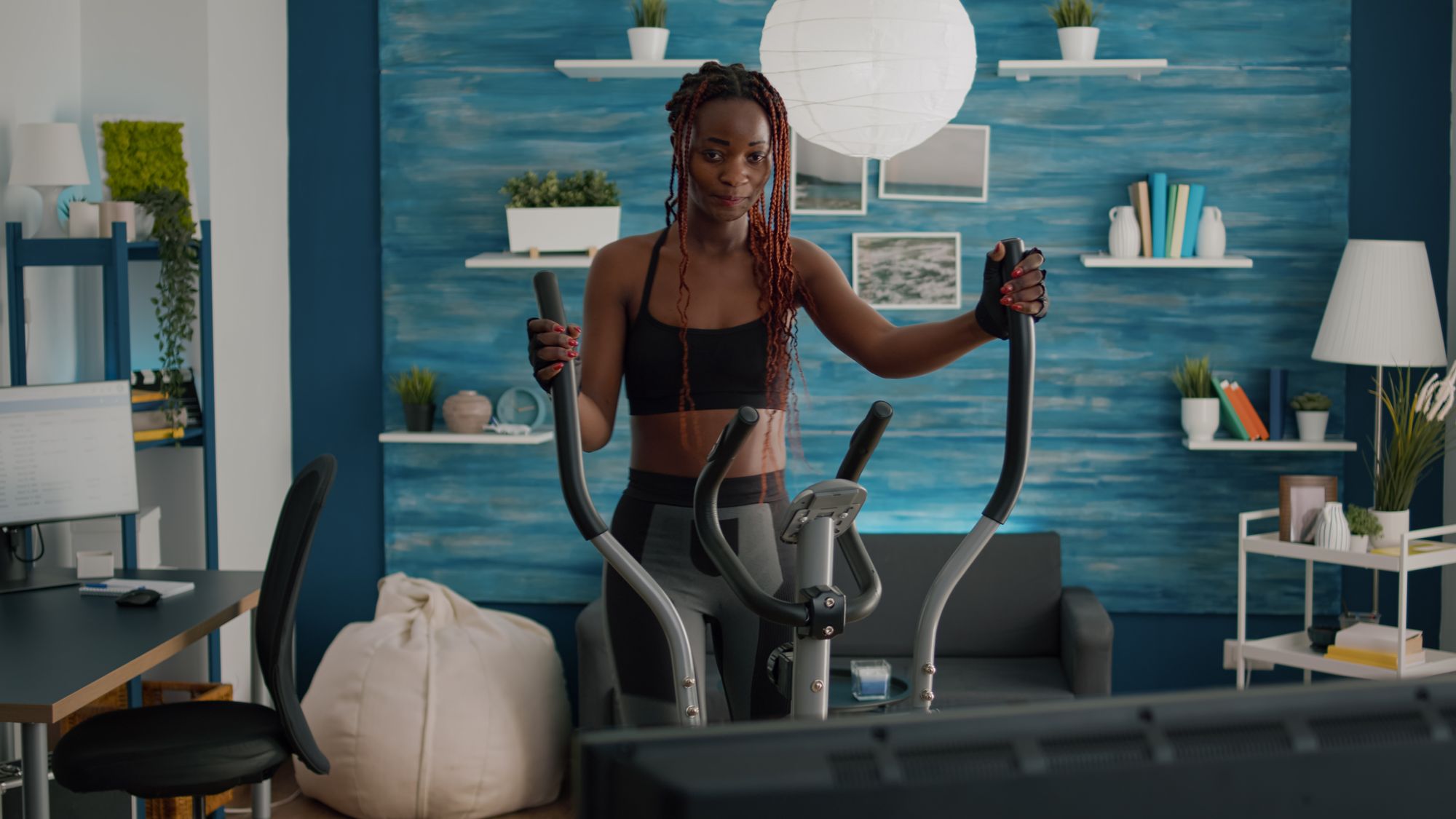
Personalization Ideas for Your Home Gym
Personalizing your home gym can boost your motivation and make your workouts more enjoyable. Here are creative ideas for adding a personal touch to your fitness space:
- Themed Design: Choose a theme that inspires you, whether it's a tranquil Zen space for yoga, a vibrant and energetic design for cardio workouts, or a rugged industrial look for strength training.
Inspiration: Transform one wall into a motivational mural or use LED lighting to create an energizing atmosphere.
- Hydration Station: Set up a dedicated area for hydration, complete with a water cooler, reusable bottles, and electrolyte supplements. Staying hydrated is key to effective workouts.
Idea: Add a mini-fridge stocked with cold water and healthy post-workout snacks for convenience.
- Technology Integration: Incorporate technology to enhance your workouts. Use a tablet or smartphone holder to stream workout classes, track your progress with fitness apps, or play energizing music.
Enhancement: Install a smart speaker for voice-controlled timers, reminders, or to easily change music tracks without interrupting your workout.
- Personal Achievements Display: Create a space to display your fitness achievements, such as race bibs, medals, or progress photos. Seeing your accomplishments can provide a powerful motivational boost.
Idea: Use shadow boxes or magnetic boards for an organized and stylish display of your achievements.
- Workout Library: Dedicate a shelf or cabinet for workout resources, including DVDs, books, and magazines. Having easy access to new workout ideas can keep your routine fresh and exciting.
Suggestion: Organize resources by workout type or goal for easy navigation.
By implementing these maintenance and personalization tips, you can ensure your home gym remains a safe, functional, and motivating space where you enjoy spending time and working towards your fitness goals.
Making Your Home Gym Fun, Functional, and Safe
Creating a home gym goes beyond just the fitness equipment. It's about designing a space that's fun, functional, and safe, encouraging you to consistently maintain your workout routine. Here are some tips on how to achieve this.
Fun and Engaging: A home gym should inspire and motivate you. Incorporate elements that make your workouts enjoyable.
- Personalize Your Space: Decorate with motivational quotes, posters, or anything that boosts your mood. Displaying your fitness achievements can also be a great motivator.
- Entertainment: Consider installing a TV or sound system for music or to stream workout classes. This can make your workouts more enjoyable and engaging.
- Choose Vibrant Colors: Colors can significantly affect your mood. Vibrant colors can inject energy into your workouts, while neutral shades can create a calming ambiance.
Safety Considerations: Safety should always be a priority in your home gym design.
- Flooring: Opt for non-slip, cushioned flooring to minimize the risk of accidents and to dampen noise. Rubber or foam flooring is a good choice.
- Equipment Placement: Ensure there's enough space around each equipment piece for safe use, and secure any heavy equipment to prevent tipping.
- Ventilation: Good air circulation is critical, especially during intense workouts. Install fans or open windows to keep the room fresh and cool.
- First Aid: Keep a first aid kit handy for any minor injuries.
Functional Design Elements: A well-designed gym should be easy to navigate and use.
- Efficient Layout: Group similar pieces of equipment together to create workout zones. This could be a cardio zone, strength training zone, and stretching zone.
- Storage Solutions: Keep your space tidy with smart storage solutions. Wall-mounted racks for weights, hooks for resistance bands, and shelving units for yoga mats can keep your equipment organized.
- Lighting: Good lighting is essential. Natural light is ideal, but if not available, install bright, cool-toned lights to keep the space well-lit.
- Mirrors: Installing mirrors can help you check your form during workouts, making your exercises more effective and safe.
Creating a home gym that's fun, functional, and safe is an investment in your wellbeing. By incorporating these design elements, you can create a space that not only supports your fitness goals but also enhances your overall workout experience.
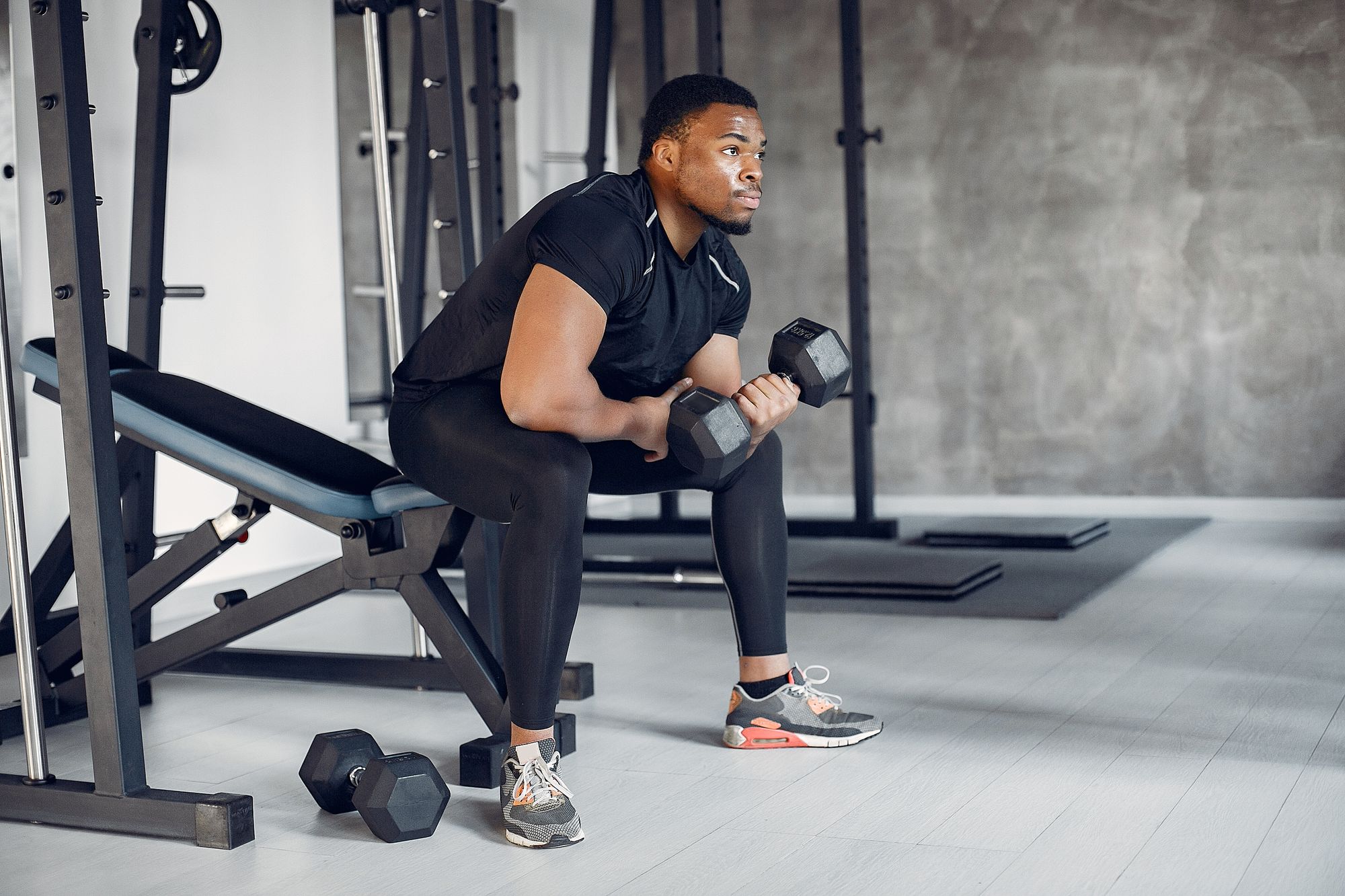
Motivational Ideas for Your Home Gym
Decor and setup play a crucial role in creating a motivational environment for your home gym. Here are some suggestions along with real-life examples to inspire you:
- Inspirational Wall Art: Hang motivational posters or decals with encouraging quotes on your walls.
- Example: One person transformed a bare wall into a motivational focal point by painting a massive mural of the word "Believe," reminding them to have faith in their fitness journey each day. - Personal Achievements Display: Showcase your fitness achievements, like medals from marathons or triathlons, on a dedicated wall or shelf.
- Example: A fitness enthusiast created an "achievement wall" filled with their marathon medals and photographs of their most memorable fitness milestones. - Color Psychology: Choose colors that inspire energy, enthusiasm, and determination. Vibrant shades of red, orange, or yellow can stimulate activity and motivation.
- Example: A home-gym owner painted one wall bright red, adding an instant energy boost to the room that invigorates their workouts. - High-Energy Music: Install a sound system and create a playlist with songs that make you want to move.
- Example: A passionate dancer set up a sound system to play upbeat tunes, turning their workout space into a dance-fitness studio. - Vision Board: Create a vision board with images and words that represent your fitness goals, and place it in a visible area.
- Example: A dedicated weightlifter placed a vision board featuring images of their fitness idols and target physique, providing daily visual motivation. - Progress Tracker: A visible progress tracker, such as a whiteboard or chalkboard, can help keep you motivated by showing how far you've come.
- Example: A yoga practitioner kept a chalkboard in their workout space, marking off each completed session towards their goal of 100 days of yoga. - Mirror: Mirrors not only help with form but also provide a constant reminder of the changes in your physique, boosting your motivation.
- Example: A fitness enthusiast installed wall-to-wall mirrors, allowing them to observe their progress and form during their strength training routine.
Remember, your home gym should be a place that motivates you to push past your limits and enjoy your fitness journey. With these decor ideas, you can create a space that keeps you inspired and committed to your goals.
Quick and Affordable DIY Home Gym Ideas
Creating a home gym doesn't have to be a pricey endeavor. With a bit of creativity and resourcefulness, you can set up a functional and inspiring workout space on a budget. Here are some affordable DIY home gym ideas along with real-life examples to inspire you:
- Consider Multipurpose Equipment: Opt for versatile pieces like resistance bands, kettlebells, or a stability ball that offer a range of exercise options.
- Example: A fitness enthusiast used resistance bands, a yoga mat, and a set of adjustable dumbbells for a full-body workout, demonstrating that a few well-chosen items can be just as effective as a room full of machines. - DIY Equipment: Get creative and make your own exercise equipment. A sturdy broomstick can serve as a barbell, and filled water bottles can double as weights.
- Example: One person made their own medicine ball using an old basketball filled with sand, showing that a bit of creativity can go a long way in saving money. - Use What You Have: Look around your house for items that can serve as workout equipment. Stairs can be used for cardio, and a sturdy chair for step-ups or tricep dips.
- Example: A homeowner turned their unused garage into a home gym, utilizing the concrete floor for weightlifting and the stairs for cardio workouts. - Thrift and Second-Hand Equipment: Check out local thrift stores, garage sales, or online marketplaces for used equipment. Often, you can find quality pieces at a fraction of the cost.
- Example: A budget-conscious gym-goer found a barely-used treadmill for half the retail price on an online marketplace, proving that great deals are available if you're patient and persistent. - Use Your Wall: Install a pull-up bar in a doorway or mount TRX straps to the wall for a full-body workout.
- Example: A DIY enthusiast installed a homemade pull-up bar in their doorway, providing a space-saving and cost-effective solution for upper body workouts.
While creating a budget-friendly home gym might require a bit more creativity and effort, the end result can be just as effective as a high-end setup. The key is to focus on your fitness goals and find affordable ways to meet them. With these tips and examples, you can create a home gym that's both kind to your wallet and beneficial for your health.
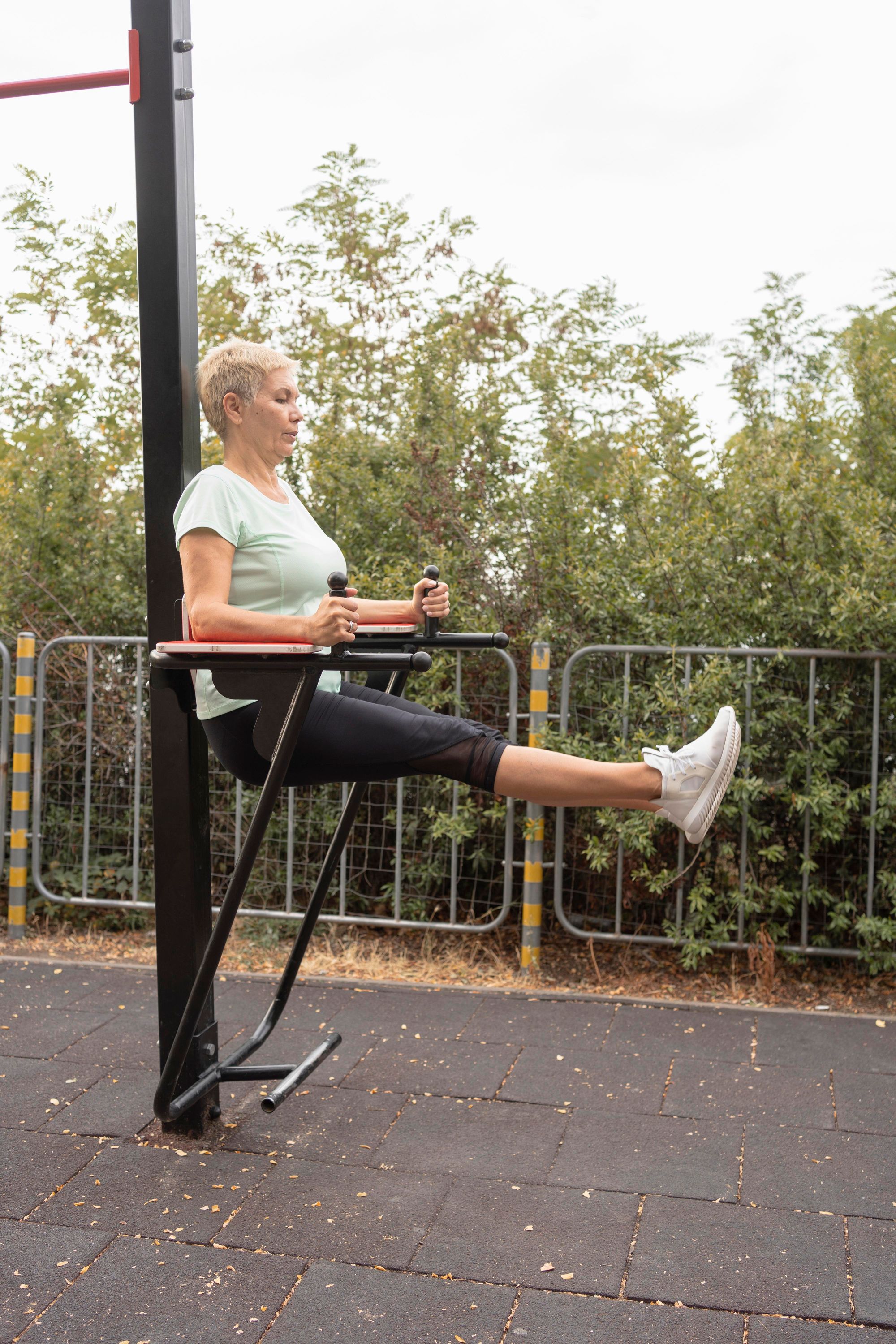
Setting Up a Backyard Gym
Creating a backyard gym is an excellent option for those who prefer outdoor workouts or lack indoor space. Here are the steps to set one up, along with its advantages, disadvantages, and real-life examples.
- Assess Your Space: Determine how much space you have and what kind of equipment it can accommodate. Consider the ground surface—grass, patio, or decking—and its suitability for different types of exercise.
- Choose Equipment: Based on your fitness goals and available space, select your equipment. This could range from a simple yoga mat and dumbbells to larger equipment like a bench press or squat rack.
- Protect Your Equipment: Since your gym is outdoors, consider weather-resistant equipment or storage solutions like an outdoor storage box or shed to protect your gear from the elements.
- Safety Measures: Ensure your workout area is safe. It should be flat, free from obstructions, and have enough room around each piece of equipment.
Advantages of a Backyard Gym:
- Fresh Air: Working out outdoors can boost your mood and provide much-needed vitamin D.
- Space: If you have a large backyard, space constraints may not be an issue.
- Privacy: It offers more privacy compared to public gyms.
Disadvantages of a Backyard Gym:
- Weather: Adverse weather conditions can disrupt your workout routine.
- Equipment Safety: Outdoor equipment may be exposed to the elements, leading to wear and tear.
Real-life Examples:
- One fitness enthusiast transformed their spacious garden into a comprehensive workout area, complete with a squat rack, bench press, and various free weights, all placed on a weather-resistant mat.
A yoga lover created a serene outdoor yoga space in their backyard. They used a shaded corner, a comfortable yoga mat, and surrounded the area with calming plants and decorations for a tranquil environment.
A backyard gym can be a fantastic way to maintain your fitness routine. With careful planning and consideration, you can create an inspiring outdoor workout space tailored to your needs.
In conclusion, setting up your gym—whether indoors, in your backyard, or on a budget—can be an excellent investment in your health and wellness. The convenience and personalization of a home gym can significantly enhance your workout experience and make your fitness journey even more enjoyable.
Remember, the key to a great home gym is not about having expensive or extensive equipment but rather creating a space that motivates you and suits your fitness goals. From using multipurpose equipment or DIY solutions on a budget to making use of outdoor space for a backyard gym, there are numerous ways to create a workout area that is both functional and inspiring.
However, it's essential to consider the advantages and disadvantages of your chosen setup. An indoor gym can offer comfort and convenience, but space may be limited. A backyard gym gives you plenty of space and fresh air but can be affected by weather conditions.
Real-life examples have shown us that with a bit of creativity and resourcefulness, it's possible to set up effective workout spaces in various environments. These gyms reflect the owners' fitness goals and personal tastes, proving that a home gym can be as unique and individual as you are.
Ultimately, the best home gym is the one that you feel motivated to use regularly. With careful planning and a bit of creativity, you can design a workout space that fuels your fitness journey and enhances your overall well-being.


